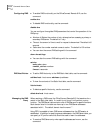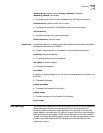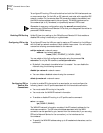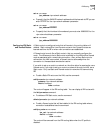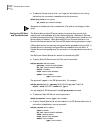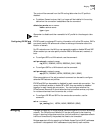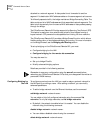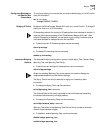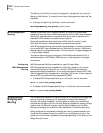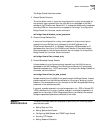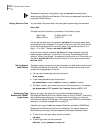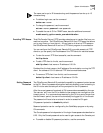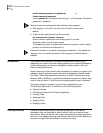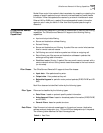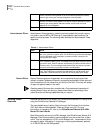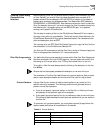
6-22 CHAPTER 6: MANUAL SETUP
The Spanning Tree Priority is the priority assigned to a bridge that is running the
Spanning Tree Protocol. It is used for prioritizing the bridges when Spanning Tree
is enabled.
■ To change the Spanning Tree Priority, use the command:
set bridge spanning_tree_priority <priority value>
MAC-Encapsulated
Routing
Because routers base their forwarding decision on network-level addresses,
packets that are routed over a WAN are transmitted without MAC-layer addresses.
Additionally, address resolution procedures that can be used to determine the
destination MAC address for a packet are not required.
Conversely, packets that are bridged over a Wide Area Connection include
MAC-layer information. Address resolution procedures are required.
MAC-Encapsulated Routing uses network-level addresses for forwarding decisions
but transmits MAC-layer addresses over the Wide Area Connection. Additionally,
address resolution procedures are used. To the remote site, the packets appear as
if they had been bridged.
This feature allows the routing features of the OfficeConnect Remote 812 (i.e.,
address translation, DHCP Server, DNS Proxy, etc.) to be employed in a bridged
environment.
Configuring
MAC-Encapsulated
Routing
MAC-Encapsulated Routing is specified on a per-VC basis. When
MAC-Encapsulated Routing is enabled in a VC profile, packets for the routed
protocols configured by the profile (i.e., IP and/or IPX) will be sent using the
appropriate bridged encapsulation. If the configured network service is RFC 1483,
then the packets will be encapsulated in a bridged-1483 format. If the configured
service is PPP, the packets will be encapsulated in BRCP.
■ To enable MAC-Encapsulated Routing in a VC profile, use the command:
set vc <vc_name> mac_routing enable
■ To disable the MAC-Encapsulated Routing in a VC profile, use the command:
set vc <vc_name> mac_routing disable
Simultaneous
Bridging and
Routing
The OfficeConnect Remote 812 can be configured for simultaneous bridging and
routing. IP routing is configured if IP forwarding is enabled (see Enabling IP
Routing). IPX routing is enabled if an IPX network is present over the Ethernet
interface (see Configuring IPX for the LAN). Bridging is enabled by adding a bridge
network over the Ethernet interface. (see Configuring Bridging for the LAN).
Routing and bridging are enabled for each destination in its remote site profile.
When configured for simultaneous bridging and routing, packets received from
the LAN are first passed through the router for any configured protocols. If the
packet can not be routed it is passed to the bridge depending on the setting of the
Bridge Firewall function.



